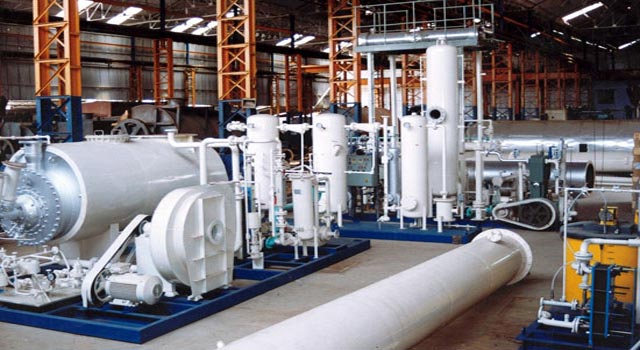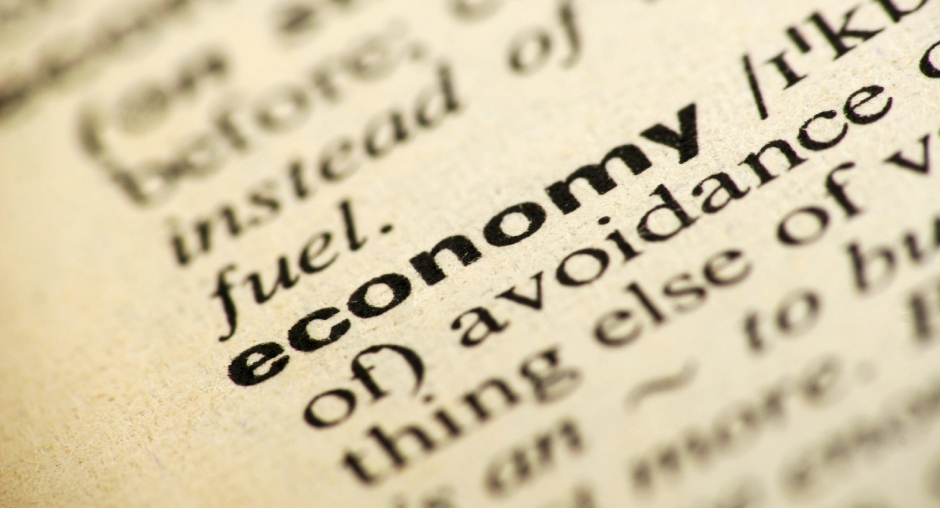The lazy man does not roast what he took in hunting. But diligence is man’s precious possession.
Proverbs 12:27
The hand of the diligent will rule. But the lazy man will be put to forced labour
Proverbs 12:24
Main Prayer Focus of the Week:
- The creation of a strong foundation for the industrialization of Uganda
- The development of a solid foundation in Uganda’s infrastructure sector: roads, railways, air transportation, water and sewerage, communication, power supply, internet services, schools and hospitals
OVERVIEW OF THE WEEK’S THEME
With the exception of the immensely oil rich gulf states, history had shown that it is only those countries that have industrialized that have been able to emerge from poverty. Since the Industrial Revolution, no country has become a major economy without becoming an industrial power[1]. It is export orientated manufacturing that Uganda needs to look to for employment opportunities. The majority of the working population in Africa (60%) is employed in agriculture but its contribution to GDP is just 15%. [2]
Mensa Otabil in his book, “Buy the Future” defines the lazy man of Proverbs 12:27 as the hunter who works hard physically to hunt for game but fails to take his products to the next level[3]. Roasting is the process that takes hunted meat from its raw state into a more edible secondary state. The laziness in question is not physical laziness but mental laziness, where an individual finds it too mentally tasking to contemplate and explore the possibilities available to him beyond his/her routine. A mind that sits idle and never gets exercised in innovative thinking belongs to a lazy person. It describes the disposition of those who do not learn how to process their primary products into more useful secondary, tertiary, and even quaternary and products. These wise sayings throw light on how we manage our resources.
Roasting helps one to generate secondary income from one’s primary income. A country may produce gold, for example, but will have no facility for “roasting” gold; no gold refinery. The gold is taken to another nation, which has a refinery to refine the gold and mold expensive jewelry out of it. The raw gold producer turns around and buys the finished jewelries at a very high price. The same applies to almost all our raw materials: coffee, oil, copper, cocoa, aluminum, fish, crops, fruits, etc! Singapore had neither oil nor gas but has become the world’s third largest producer of refined oil and has established an advanced down stream petrochemical industry[4]. Africa needs to change strategy from exporting its raw materials to transforming them into high value final consumer goods.[5]
Africa has 30% of the world’s minerals and accounts for just 1% of global manufacturing Shrinking from 3% in the 1970s [6]. Africa’s terms of trade with industrialized countries will only get worse if the continent keeps exporting primary commodities[7]. Africa’s share of global manufacturing is shameful.
Industrialization versus Agriculture
In Uganda agriculture employs about 80% of the workforce but only contributes 30% of the GDP[8]. This implies that it is not a very productive sector. The means of agriculture we employ are not cost effective to make our agricultural products competitive on the international markets. Mechanization of agriculture would require a reduction of the sector of the economy that engages in agriculture,
Factories are the ideal way of absorbing the millions who come onto the job market every year[9]. The number of young people entering Africa’s job market is set to rise for years to come because a rapid systemic reduction in fertility rates is yet to occur in SSA.
Steel, the principal capital input for railways and bridges is imported and this time round from China with some limited local content just it was brought from Britain and France 120 years ago. The steel of the railroads was probably made from iron ore extracted out of Africa[10].
Uganda’s Oil Economy:
Uganda’s oil and gas industry is at its initial fledgling stage. With oil reserves now estimated at 6.5 million barrels after exploration of only 40% of the Albertine Rift basin and the estimated recoverable oil at 1.4 billion barrels, the country is preparing for an unprecedented jump in oil production. Estimates of natural gas reserves stand at 500 billion cubic feet. However, for the industry to realize this potential in full, a number of economic, social and geopolitical factors that influence the oil and gas sector globally need to be taken into consideration – as well as the technological and logistical challenges involved in extracting oil and gas from these reserves. It is necessary to understand how important variables such as global demand for fuel, the rise of alternative energy sources, climate change, regional conflicts impacts and economic development trends in different parts of the planet will influence the sector.
According to Uganda’s Ministry of Energy and Mineral Development, the country has an unprecedented drilling success rate with more than 85 per cent of drilled wells finding oil and gas – the rate is one of the highest in the world. Additionally, the cost of finding oil and gas is among the lowest in the world, at less than US$1 per barrel, compared with a world average cost between US$5-25. The government hopes that the oil and gas sector will transform the country from a low-income into an upper middle-income country by 2040 and from a net importer to a net exporter of oil and its products. Caution, however, is recommended with respect to estimates of future oil revenues, especially in today’s new oil price realities.
Uganda has no domestic refinery, and all petroleum products are imported, mainly from the refinery in Mombasa, Kenya, which also supplies the other countries in the East African Community – the intergovernmental organization in the African Great Lakes region. This gives Kenya some degree of a virtual stranglehold over the economies of its neighbors. In an attempt to reduce this perceived vulnerability as well as its import bills, the government of Uganda plans to built the country’s first refinery. “
Though the oil and gas sectors contribute large revenues to national coffers, they create very little employment – less than 1% of the work force in most countries.
For producers of oil and gas, the ultimate beneficiation would come not in the form of royalties and crude oil/liquefied natural gas exports but from advancing the spin industries through employing oil and gas as raw material. Chemicals derived from petroleum or natural gas make their final mark in the consumer market where they appear in a range of goods including in agriculture, communication, personal health, medicine and transport industries. They are vital in cars, computers, mobile phones, toys, pesticides and fertilisers, household cleaning products, and pharmaceutical drugs.[11]
PRAY THAT THE OBJECTIVES OF THE NATIONAL OIL AND GAS POLICY WILL BE ACHIEVED. That there will be:
- Efficiency in licensing areas with the potential for oil and gas production in the country.
- Effective management of the country’s oil and gas resource potential.
- Efficient production of the country’s oil and gas resources.
- Prudent utilization of the country’s oil and gas resources.
- Development of suitable transport solutions that give good value to the country’s oil and gas resources.
- Collection of the right revenues and their prudent use to create lasting value for the entire nation.
- Optimum national participation in oil and gas activities.
- Development and maintenance of national expertise.
- Conserves the environment and biodiversity.
- Mutually beneficial relationships between the state, oil companies and other stakeholders in the development of a desirable oil and gas sector for the country.
MINERAL SECTOR
Pray that:
- The development of the iron ore industry in Uganda. No country can industrialize without a domestic steel sector[12]. Uganda is well endowed with high-grade iron ore in the western part of the country. After oil, iron ore is the second most-traded raw material in international commodity markets.
POWER DEMAND
- Uganda will require 2,000 Megawatts (MW) electricity by the year 2025 to run its industries and homes. To achieve this, more than $3.5 billion (about Shs623 billion) will have to be sourced and spend in the energy sector[13]. Within 20 years from now the country must generate an additional 1700MW to meet its demand capacity. Uganda is currently facing a huge electricity supply deficit, as over 90 percent of the country’s population is not connected to the national grid.
- The installed capacity in Uganda is about 300 MW, over 98 percent of electricity is generated by the hydroelectric plant at Owen Falls (the 180 MW Nalubaale station and the 200 MW Kiira station with five 40 MW units of which three have been installed) on the Victoria Nile[14]. There exists a small hydro power station at Maziba with an installed capacity of about 2 MW and independent power generation at Kilembe Mines and Kasese Cobalt Ltd with a combined capacity of over 15 MW. It has been estimated that there is another 80 MW of privately installed captive generation capacity.
INSTITUTIONS PRAYER FOCUS FOR WEEK SIX
Pray for these institutions using the prayer guidelines in Chapter One:
- Ministry of Trade, Ministry of Internal Affairs / Immigration,
- Ministry for Science and Technology
- Uganda Industrial Research Institute
- Uganda National Bureau of Statistics, (trade and Industry have almost the same because the two functions have been under one docket until recently)
- Umeme
- Uganda Manufacturers Association
- Uganda Small Scale Industries Association
[1] Lee Kuan Yew quoted in Africa’s Industrialization by David Ssepuuya, p. 336
[2] McKinsey, 2010 in Africa’s Industrialization by David Ssepuuya, p.133)
[3] Buy the Future by Mensa Otabil
[4] Africa’s Industrialization by David Ssepuuya, p.308
[5] (ibid, p.14).
[6] (ibid, p.299)
[7] (Africa’s Industrialization by David Ssepuuya, p.331)
[8] (ibid p.213)
[9] (ibid, 2017, p.348)
[10] (ibid, p. 343)
[11] (Africa’s Industrialization by David Ssepuuya, p.308)
[12] (Ssepuuya, p. 286)
[13] https://www.mbendi.com/indy/powr/af/ug/p0005.htm
[14] https://www.mbendi.com/indy/powr/af/ug/p0005.htm


